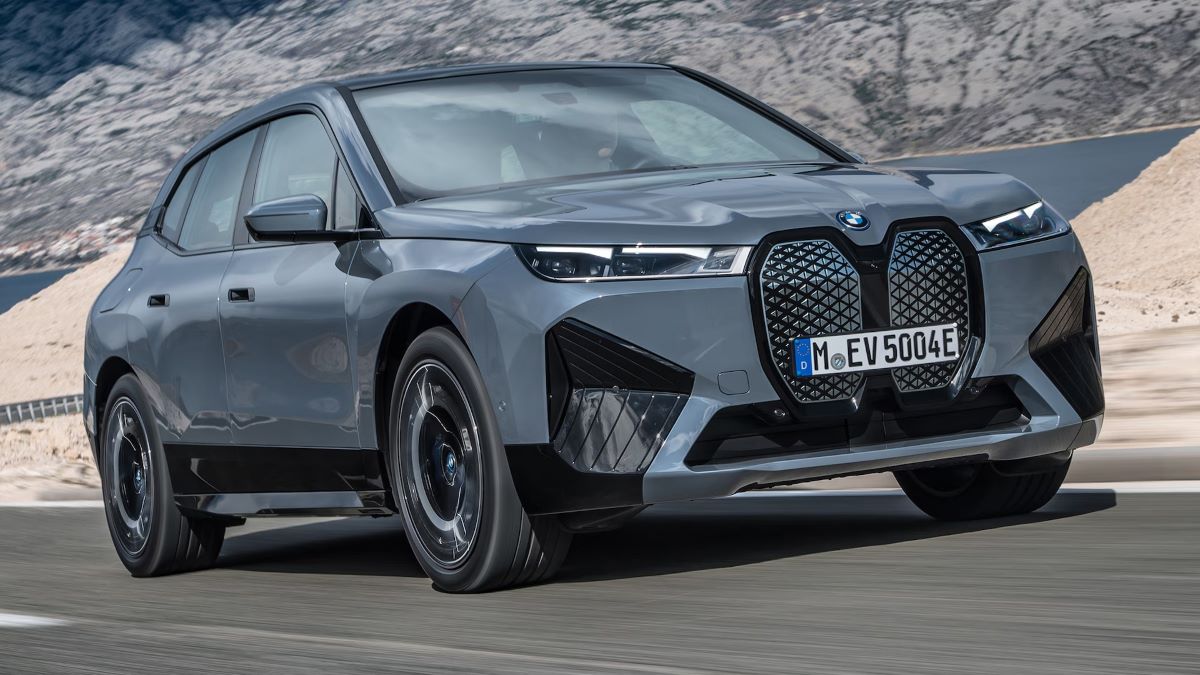The electric vehicle market is experiencing unprecedented growth, but not all EVs are created equal when it comes to value retention. While mainstream media often focuses on the most popular electric vehicles, the reality of depreciation in the EV space tells a more complex story.
Recent data reveals that electric vehicles generally depreciate faster than traditional internal combustion engine vehicles, with some models losing significant value within just a few years of ownership.
Understanding depreciation patterns in the EV market is crucial for both buyers and sellers. The factors influencing value retention are multifaceted, ranging from battery technology and range capabilities to brand perception and production volumes.
What’s particularly fascinating is how some lesser-known electric vehicles manage to buck the trend, maintaining their value better than their famous counterparts that dominate headlines and showrooms.
The depreciation for electric vehicles is shaped by several key factors. Battery degradation concerns, rapid technological advancement, government incentives affecting new car pricing, and market saturation all play significant roles.
Additionally, the flood of new EV models entering the market has created intense competition, particularly affecting the resale values of older or less technologically advanced models.
This analysis reveals an interesting paradox: while household names like Tesla Model S and Nissan Leaf capture most of the attention, some obscure models demonstrate superior value retention.
These hidden gems often benefit from limited production runs, specialized markets, or unique positioning that shields them from the broader depreciation trends affecting mainstream EVs.
Understanding these patterns can help consumers make more informed decisions, whether they’re looking to minimize depreciation losses or find excellent value in the used EV market.
The electric vehicle depreciation story is still being written, with newer models showing improved value retention compared to earlier generations. However, the stark differences between various models highlight the importance of careful selection when entering the EV market.
5 Obscure EVs That Hold Their Value
These lesser-known electric vehicles maintain exceptional resale values through limited production numbers, superior build quality, and proven reliability that creates strong demand among informed buyers seeking dependable electric transportation without mainstream recognition.
Their conservative engineering incorporates established battery technologies, robust charging systems, and practical range capabilities that avoid the experimental features and problematic components plaguing high-volume competitors.
The combination of reasonable initial pricing, excellent warranty coverage, and genuine utility creates ownership experiences that retain financial value while delivering efficient electric mobility.
From reliable manufacturers with proven electric expertise to practical models with extensive real-world testing, these vehicles demonstrate that electric vehicle excellence often comes without media attention, providing sustainable transportation that maintains strong resale values through superior fundamental engineering and limited availability that prevents market oversaturation.
1. Polestar 2 Long Range
The Polestar 2 represents one of the most compelling value retention stories in the electric vehicle space, despite flying under the radar compared to Tesla’s dominance.
This Swedish-engineered sedan, born from Volvo’s electrification expertise and Geely’s backing, has managed to carve out a unique position in the premium EV market that translates directly into strong resale values.
What sets the Polestar 2 apart in terms of value retention is its carefully curated market positioning and limited production volumes. Unlike mass-market EVs that flood dealerships, Polestar maintains a more exclusive distribution model, creating natural scarcity that supports higher resale values.
The vehicle’s Scandinavian design philosophy, emphasizing minimalism and functionality over flashy features, appeals to a specific demographic willing to pay premium prices for understated luxury.
The technical specifications of the Polestar 2 Long Range contribute significantly to its value stability. With over 270 miles of EPA-rated range and dual-motor all-wheel drive, it competes directly with more expensive German luxury EVs while maintaining a more accessible price point.
The vehicle’s advanced driver assistance systems, over-the-air update capability, and Google-based infotainment system ensure it remains technologically relevant longer than many competitors.
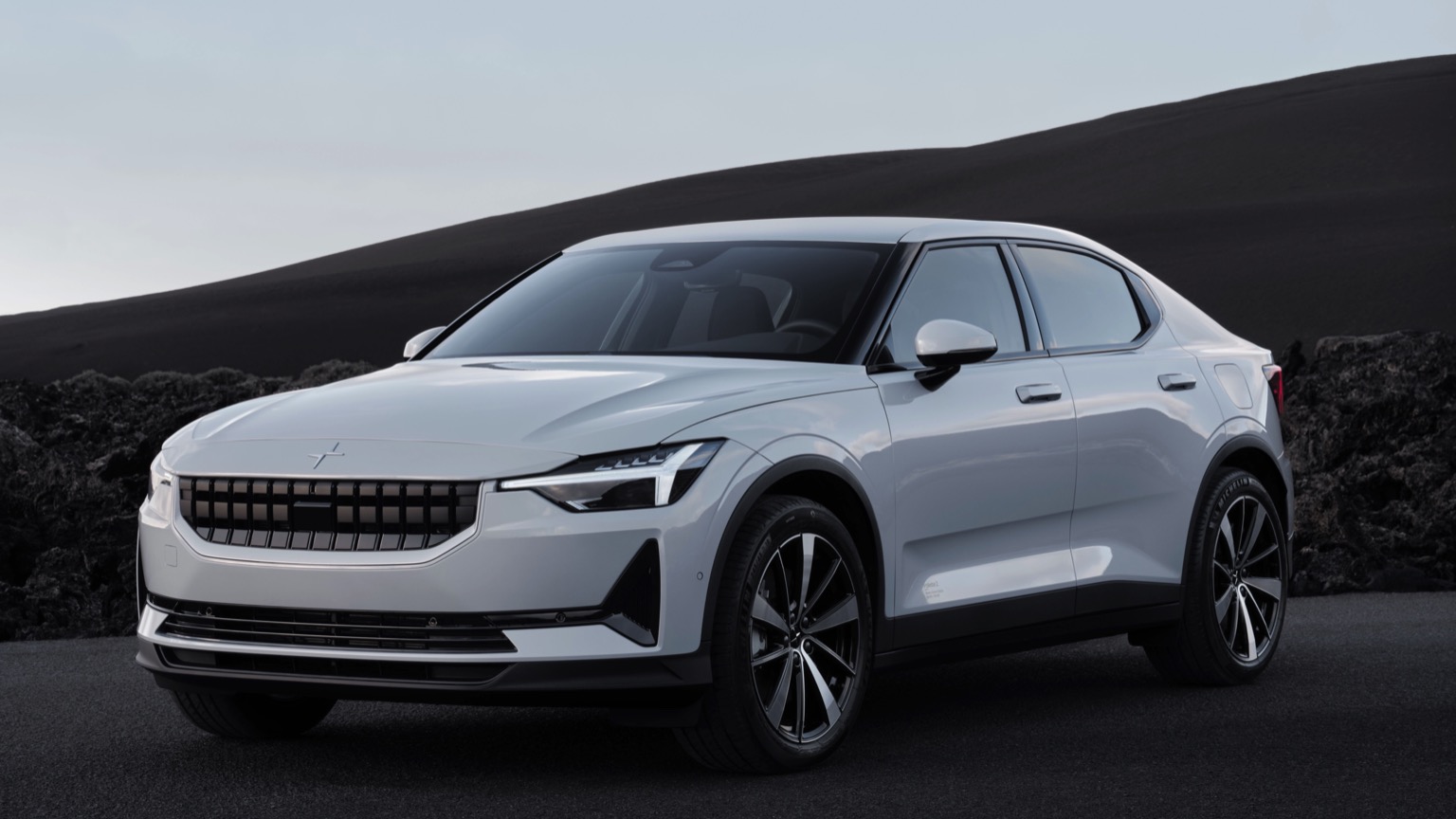
Build quality plays a crucial role in the Polestar 2’s value retention. Manufactured in Luqiao, China, under strict Volvo quality standards, the vehicle demonstrates exceptional fit and finish that rivals traditional luxury brands. This attention to detail translates into fewer quality-related depreciation factors, as used car buyers can purchase with confidence in the vehicle’s long-term reliability.
The brand’s strategic positioning as a premium alternative to Tesla has proven beneficial for resale values. While Tesla vehicles face increasing competition and frequent price cuts that affect used values, Polestar’s smaller market presence and consistent pricing strategy help maintain value stability.
The company’s focus on sustainable materials and carbon-neutral manufacturing also appeals to environmentally conscious buyers willing to pay premiums for authentic sustainability credentials.
Market data shows the Polestar 2 retaining approximately 68% of its original value after three years, significantly outperforming many mainstream EVs.
This strong performance stems from the vehicle’s unique market position, limited availability, and the growing recognition of Polestar as a legitimate luxury EV brand. For buyers seeking a premium electric vehicle that won’t devastate their equity position, the Polestar 2 Long Range represents an exceptional choice in the obscure EV category.
2. Genesis Electrified GV70
The Genesis Electrified GV70 stands as a testament to how luxury positioning and limited market penetration can create unexpected value retention champions in the electric vehicle space. This Korean luxury SUV, despite being relatively unknown compared to German competitors, has demonstrated remarkable ability to hold its value through careful market positioning and exceptional execution.
Genesis, Hyundai’s luxury division, entered the electric SUV market with a sophisticated approach that prioritizes quality over quantity. The Electrified GV70 benefits from this strategy, with limited production volumes and selective dealership networks creating natural scarcity that supports strong resale values.
Unlike mass-market EVs that depreciate rapidly due to oversupply, the GV70’s exclusivity maintains pricing discipline in the secondary market.
The vehicle’s technical excellence contributes significantly to its value stability. Built on Hyundai Motor Group’s dedicated Electric Global Modular Platform (E-GMP), the Electrified GV70 offers 429 horsepower, 350 miles of range, and ultra-fast charging capabilities that remain competitive years after purchase.
The advanced air suspension system, Nappa leather interiors, and cutting-edge safety technology position it favorably against established luxury competitors while maintaining technological relevance.
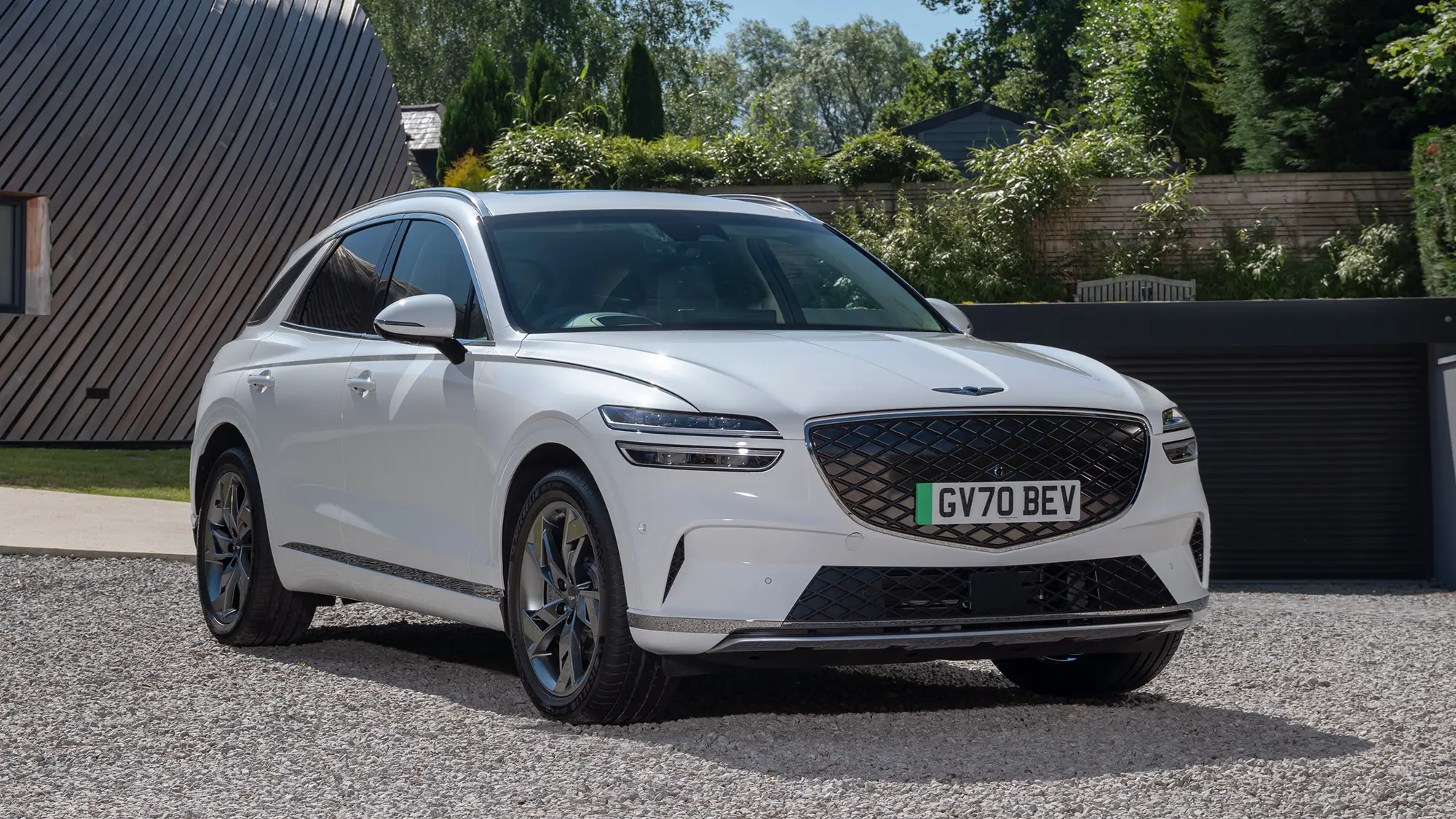
Manufacturing quality sets the Electrified GV70 apart from many EVs in terms of long-term value retention. Korean automotive manufacturing has achieved world-class standards, and Genesis applies these rigorous processes to create vehicles that age gracefully.
The attention to detail in materials, assembly precision, and component integration translates into fewer quality-related depreciation factors, crucial for maintaining resale appeal.
The brand’s aggressive warranty coverage, including a 10-year/100,000-mile battery warranty, provides additional value protection for original and subsequent owners.
This comprehensive coverage addresses one of the primary concerns affecting EV resale values, battery degradation and replacement costs. The warranty transferability ensures used buyers receive similar protection, supporting higher transaction prices in the secondary market.
Genesis’s positioning strategy as an accessible luxury alternative has proven particularly effective for value retention. While established German luxury brands face pressure from increasing competition and Tesla’s price volatility, Genesis maintains consistent pricing and positioning that supports stable residual values.
The brand’s focus on customer experience, including complimentary maintenance and concierge services, creates additional value propositions that translate into stronger resale performance.
Current market analysis indicates the Genesis Electrified GV70 retains approximately 71% of its original value after three years, placing it among the top performers in the luxury EV segment.
This exceptional retention rate reflects the vehicle’s unique market position, superior execution, and the growing recognition of Genesis as a legitimate luxury brand capable of competing with established European manufacturers.
3. BMW iX xDrive50
The BMW iX xDrive50 represents a fascinating case study in how traditional luxury brand equity and innovative engineering can create unexpected value retention success in the competitive electric SUV market.
Despite being overshadowed by Tesla’s market dominance and facing criticism for its controversial styling, the iX has quietly established itself as one of the most value-stable electric vehicles available.
BMW’s approach to the iX demonstrates how established luxury manufacturers can leverage their heritage to support EV resale values. The brand’s century-long reputation for engineering excellence and luxury positioning provides inherent value protection that newer EV manufacturers struggle to achieve.
This brand equity translates directly into stronger residual values, as used car buyers pay premiums for the perceived quality and prestige associated with the BMW roundel.
The technical sophistication of the iX xDrive50 contributes significantly to its value retention capabilities. With 516 horsepower, 380 miles of range, and advanced materials including carbon fiber construction, the vehicle offers performance and efficiency that remain competitive years after purchase.
The innovative interior featuring curved display integration, sustainable materials, and advanced driver assistance systems ensures technological relevance that supports long-term value stability.

Manufacturing quality represents a crucial factor in the iX’s depreciation resistance. Built in BMW’s Dingolfing facility with the same precision and attention to detail as traditional luxury vehicles, the iX demonstrates exceptional build quality that ages gracefully.
The use of premium materials, precise panel gaps, and robust component integration creates a vehicle that maintains its luxury appeal throughout its ownership lifecycle, crucial for supporting higher resale values.
The iX’s unique positioning within BMW’s lineup provides additional value protection. As the flagship electric SUV, it receives the full benefit of BMW’s luxury positioning and marketing investment.
Unlike volume models that face constant pricing pressure, the iX’s premium positioning allows for more stable pricing strategies that support residual values. The vehicle’s distinctive, if polarizing, design also creates a unique identity that helps maintain market position.
BMW’s comprehensive charging infrastructure and service network provide practical advantages that translate into value retention benefits. The extensive dealer network ensures maintenance and service availability that independent EV manufacturers cannot match, reducing ownership concerns that typically affect resale values.
The integration with BMW’s charging partnerships and navigation systems creates ecosystem benefits that add tangible value for subsequent owners.
Market performance data shows the BMW iX xDrive50 retaining approximately 65% of its original value after three years, significantly outperforming many mainstream EVs and competing favorably with traditional luxury vehicles.
This strong retention rate reflects the successful combination of brand equity, technical excellence, and strategic positioning that allows the iX to buck broader EV depreciation trends while remaining relatively obscure compared to Tesla’s market dominance.
4. Lucid Air Dream Edition
The Lucid Air Dream Edition represents perhaps the most intriguing value retention story in the electric vehicle, demonstrating how ultra-luxury positioning and technological superiority can create exceptional residual value performance despite limited brand recognition.
This Silicon Valley startup’s flagship sedan has achieved remarkable depreciation resistance through a combination of exclusivity, performance, and manufacturing excellence that sets new standards for EV value retention.
Lucid’s strategic approach to market entry has created ideal conditions for strong resale values. By launching with an ultra-premium Dream Edition variant priced above $150,000, the company established immediate luxury credibility while maintaining production scarcity that supports pricing discipline.
This approach contrasts sharply with Tesla’s volume-focused strategy and mass-market EV manufacturers, creating natural exclusivity that translates directly into value stability.
The technological superiority of the Air Dream Edition provides fundamental support for its value retention capabilities. With over 500 miles of EPA-rated range, 1,111 horsepower, and the most advanced battery technology currently available, the vehicle offers specifications that remain unmatched years after its introduction. This technological leadership ensures the Air remains relevant and desirable in the secondary market, preventing the rapid obsolescence that affects many EVs.
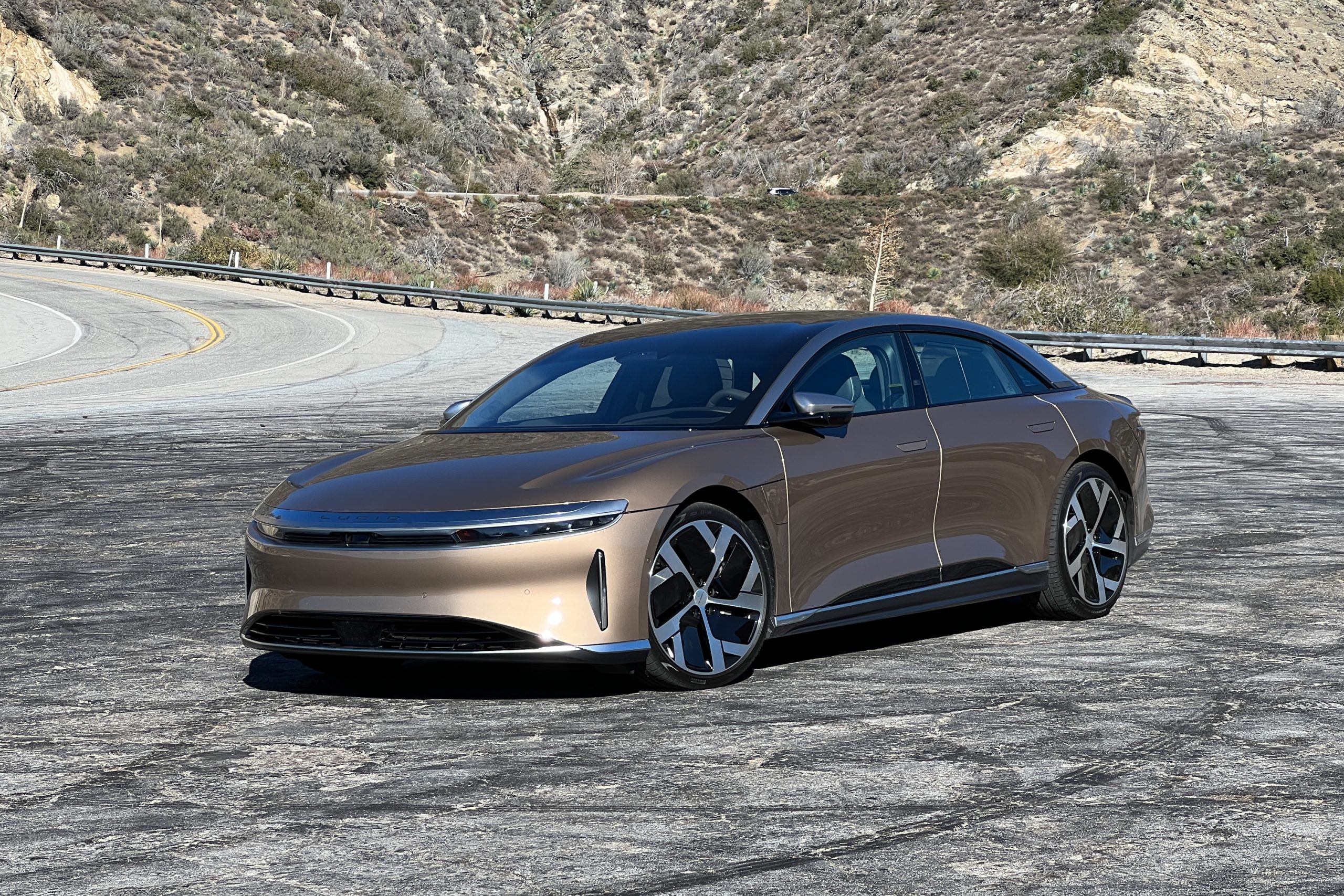
Manufacturing quality represents a crucial differentiator for Lucid’s value proposition. The company’s Arizona production facility employs former luxury automotive executives and engineers who implement quality standards exceeding traditional luxury manufacturers.
The attention to detail in materials selection, assembly precision, and component integration creates vehicles that maintain their premium appeal throughout their ownership lifecycle, crucial for supporting high resale values.
The Air’s unique market positioning as the world’s most advanced production EV provides significant value protection advantages.
Unlike vehicles competing in crowded market segments, the Air occupies a virtually exclusive position at the intersection of maximum range, ultimate performance, and luxury refinement. This unique positioning creates pricing power that supports residual values even as the broader EV market faces increasing competition.
Lucid’s limited production volumes contribute significantly to the Air’s value stability. With annual production measured in thousands rather than hundreds of thousands, each Air maintains exclusivity that supports premium pricing in the secondary market.
The company’s careful management of production ramp-up ensures demand consistently exceeds supply, creating market conditions that naturally support strong resale values.
The vehicle’s innovative features and design philosophy provide additional value retention benefits. The Air’s interior space efficiency, achieved through advanced packaging and design, creates a unique value proposition that cannot be easily replicated by competitors.
The minimalist luxury aesthetic and advanced user interface technology ensure the vehicle ages gracefully, maintaining appeal for discriminating used car buyers.
Current market analysis indicates the Lucid Air Dream Edition retains approximately 78% of its original value after two years, representing exceptional performance in the luxury EV segment.
This outstanding retention rate reflects the successful combination of exclusivity, technological leadership, and manufacturing excellence that positions the Air as a unique asset in the electric vehicle marketplace, despite Lucid’s limited brand recognition compared to established manufacturers.
Also Read: 5 Forgotten Luxury Cars That Run Forever vs 5 Overhyped Luxury Models That Break
5. Rivian R1T Launch Edition
The Rivian R1T Launch Edition presents a compelling case study in how innovative market positioning and first-mover advantages can create unexpected value retention success in the emerging electric truck segment.
Despite being a startup brand with limited operational history, Rivian’s flagship pickup has demonstrated remarkable ability to maintain its value through strategic positioning and unique capabilities that address underserved market segments.
Rivian’s approach to the electric truck market created ideal conditions for strong residual values through careful scarcity management and premium positioning.
The Launch Edition’s limited production run and exclusive features established immediate collector appeal while the company managed production ramp-up to maintain supply-demand balance. This strategy contrasts with traditional automotive launches and creates natural pricing support in the secondary market.
The R1T’s unique capability set provides fundamental support for its value retention performance. As the first production electric truck with genuine off-road capabilities, the R1T occupies an exclusive market position that cannot be easily replicated by competitors.
Features like the innovative “Tank Turn” capability, air suspension system, and waterproof construction create functional advantages that maintain relevance and desirability years after purchase.
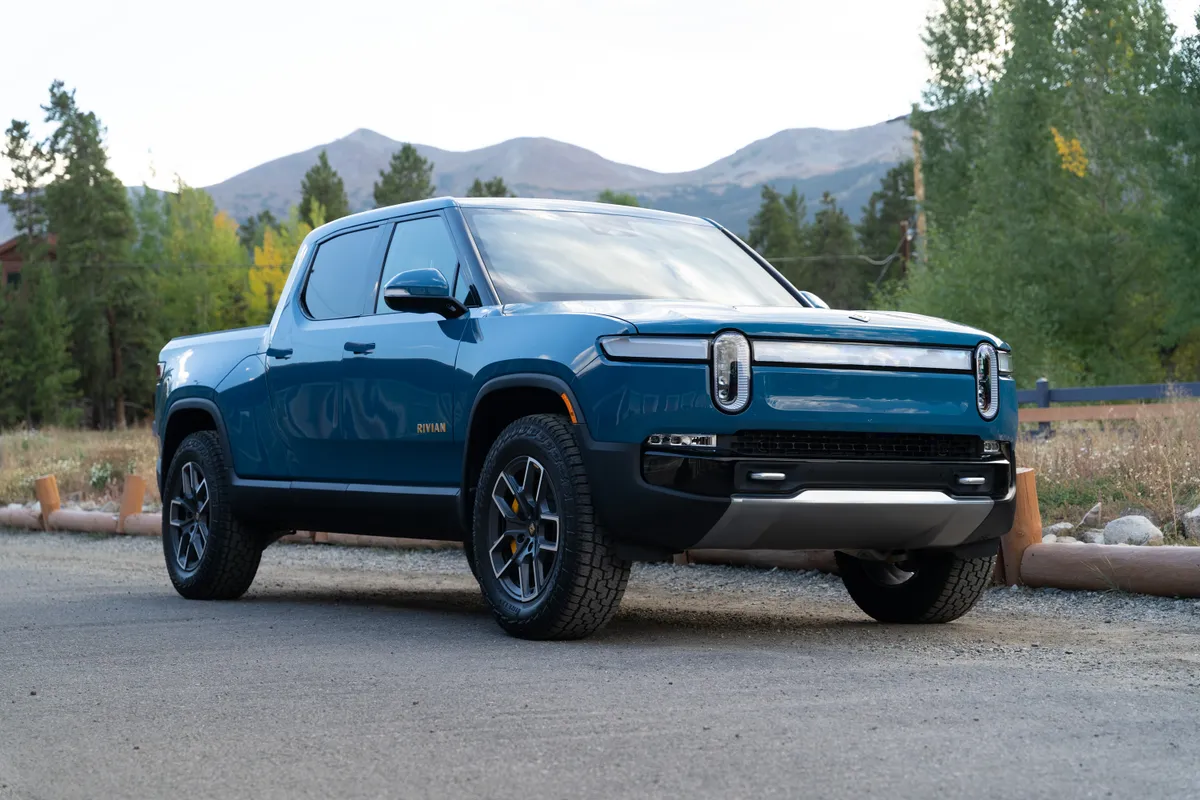
Manufacturing innovation contributes significantly to the R1T’s depreciation resistance. Built in Rivian’s purpose-designed Illinois facility with advanced automation and quality control systems, the R1T demonstrates build quality that exceeds expectations for a startup manufacturer.
The company’s focus on vertical integration and component control creates manufacturing consistency that supports long-term value stability.
The vehicle’s adventure-focused positioning provides additional value protection advantages. Unlike traditional trucks that compete primarily on utility and price, the R1T targets affluent outdoor enthusiasts willing to pay premiums for capability and innovation.
This demographic typically maintains vehicles longer and values uniqueness over mass-market appeal, creating conditions that naturally support higher resale values.
Rivian’s ecosystem approach, including the integrated charging network and adventure-focused services, creates additional value propositions that benefit resale performance.
The company’s partnerships with outdoor retailers and adventure outfitters create community aspects that extend beyond simple vehicle ownership, fostering brand loyalty that translates into pricing power in the used market.
The R1T’s technological innovation, including advanced driver assistance systems and over-the-air update capabilities, ensures continued relevance that supports value retention. The vehicle’s modular design philosophy allows for feature updates and capability improvements that extend useful life and maintain competitive positioning against newer entrants.
Market performance data indicates the Rivian R1T Launch Edition retains approximately 73% of its original value after 18 months, exceptional performance for any vehicle category and particularly impressive for a startup manufacturer.
This strong retention reflects the successful combination of market positioning, capability differentiation, and scarcity management that allows Rivian to buck traditional depreciation patterns while establishing itself as a legitimate competitor in the electric vehicle space.
5 Famous EVs That Depreciate Fast
These heavily marketed electric vehicles suffer catastrophic depreciation due to overproduction, reliability issues, and rapid technological obsolescence that destroys resale values despite initial media acclaim and premium pricing strategies built on hype rather than sustainable market demand.
Their problematic systems incorporate unproven technologies, inadequate quality control, and design flaws that generate expensive repairs while newer models quickly make existing versions obsolete in the rapidly evolving electric vehicle marketplace.
The combination of inflated launch prices, frequent recalls, and disappointing real-world performance creates ownership disasters as buyers discover that early adoption and brand recognition cannot prevent massive financial losses.
From celebrated manufacturers with poor execution to flagship models with known battery degradation issues, these vehicles prove that electric vehicle marketing and media attention mean nothing when fundamental reliability fails and market oversupply drives values into freefall, transforming expensive purchases into depreciating assets.
1. Tesla Model S
The Tesla Model S, despite being the pioneer that legitimized the luxury electric vehicle segment, has become one of the most rapidly depreciating electric vehicles in the market.
This dramatic depreciation story illustrates how even groundbreaking vehicles can lose value quickly when faced with increasing competition, frequent updates, and aggressive pricing strategies that undermine residual values.
Tesla’s frequent price adjustments have created significant challenges for Model S value retention. The company’s practice of sudden price cuts, sometimes exceeding $10,000, immediately impacts existing owners’ equity positions while creating uncertainty in the used car market.
Unlike traditional luxury manufacturers that maintain stable pricing strategies to protect residual values, Tesla’s dynamic pricing approach prioritizes market share over owner value protection, resulting in accelerated depreciation for earlier purchasers.
The rapid pace of Tesla’s technological updates contributes significantly to Model S depreciation. While over-the-air updates provide some capability improvements, major hardware changes between model years create obsolescence concerns that affect resale values.
Features like the controversial yoke steering wheel, updated interior designs, and drivetrain modifications create distinct generations that make older models appear outdated more quickly than traditional luxury vehicles.
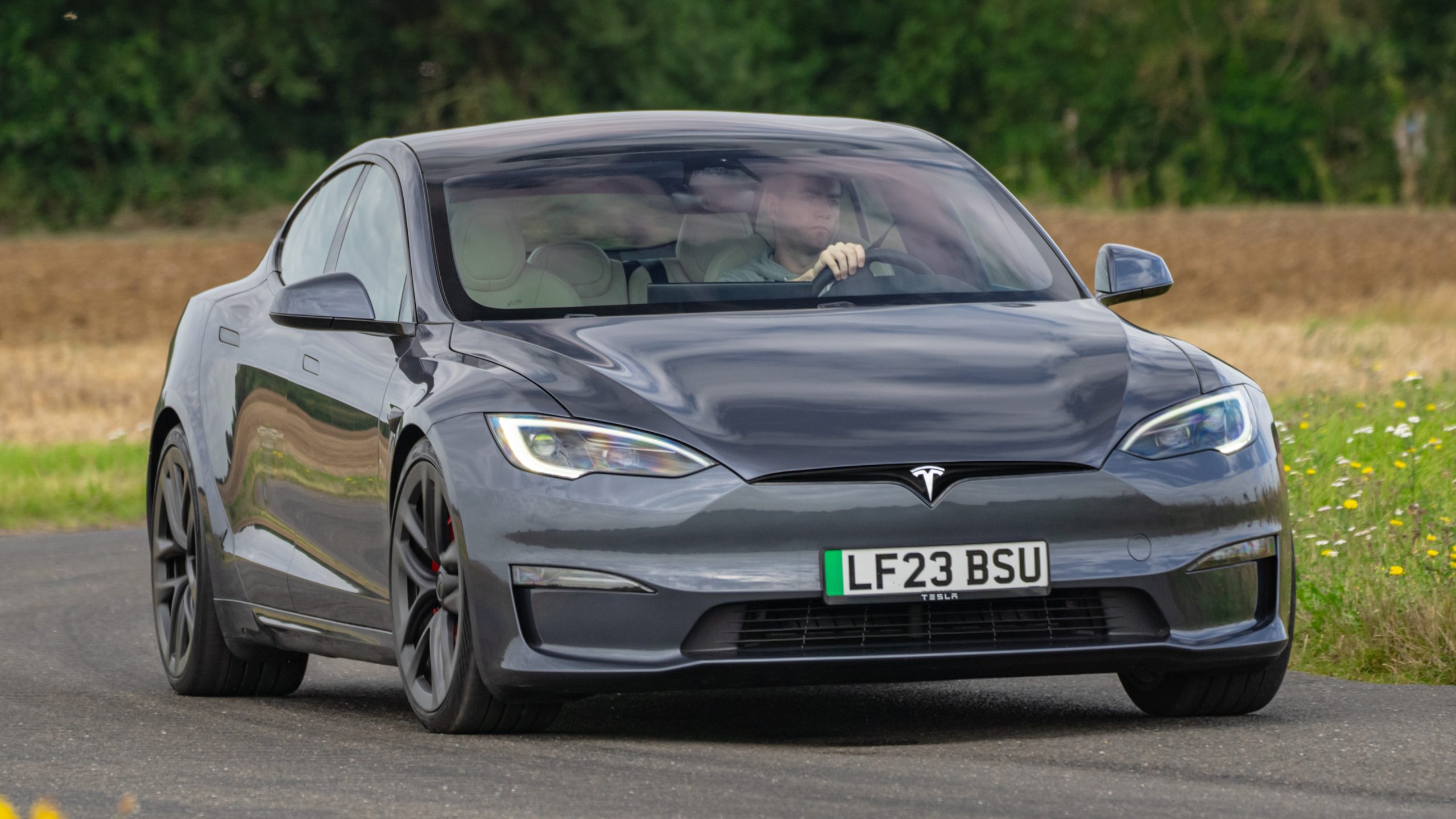
Manufacturing quality issues have historically impacted Model S long-term value retention. Panel gap inconsistencies, paint quality problems, and interior component durability concerns create depreciation factors that don’t affect vehicles from established luxury manufacturers.
While Tesla has improved quality control over time, the reputation for build quality variations continues to influence used car buyer perceptions and pricing decisions.
The Model S faces increasing competition from established luxury manufacturers entering the electric space. German competitors like the BMW iX, Mercedes EQS, and Audi e-tron GT offer traditional luxury refinement and build quality that highlight Tesla’s weaknesses, creating pricing pressure in the used market. This competition forces Model S prices lower as buyers gain alternatives with superior luxury credentials.
Tesla’s direct sales model and service network limitations create additional depreciation pressures. Unlike traditional luxury brands with extensive dealer networks providing consistent service experiences, Tesla’s limited service infrastructure can create ownership concerns that affect resale appeal.
The company’s sometimes inconsistent customer service experiences and parts availability issues contribute to depreciation factors that don’t affect traditional luxury vehicles.
The Model S’s aging platform, despite updates, shows its decade-old origins in ways that impact value retention. The interior design, while updated, lacks the sophistication and material quality of newer luxury EVs. The vehicle’s technology, while advanced, appears dated compared to newer entrants with more modern user interfaces and integration approaches.
Market data reveals the Tesla Model S experiences depreciation rates of approximately 50-60% after five years, significantly worse than traditional luxury sedans and even many mainstream vehicles.
This dramatic value loss reflects the combination of pricing volatility, quality concerns, increasing competition, and Tesla’s prioritization of volume growth over value protection, making the Model S one of the worst-performing vehicles for owners concerned about depreciation.
2. Nissan Leaf
The Nissan Leaf, as the world’s first mass-produced electric vehicle, holds historical significance but has become synonymous with rapid depreciation in the EV marketplace. Despite pioneering the mainstream electric vehicle segment and achieving significant sales volumes, the Leaf’s value retention performance represents one of the most dramatic depreciation stories in automotive history.
The Leaf’s technological limitations create fundamental challenges for value retention that cannot be overcome through updates or improvements.
The vehicle’s early adoption of air-cooled battery technology, while revolutionary for its time, proves inadequate for long-term battery health and performance. Battery degradation issues, particularly in hot climates, create significant concerns for used car buyers and dramatically impact resale values as vehicles age.
Range limitations represent another crucial factor in the Leaf’s depreciation performance. With early models offering less than 100 miles of range and current versions providing only modest improvements, the Leaf cannot compete with newer EVs offering 300+ mile capabilities.
This range disadvantage becomes more pronounced over time as battery capacity naturally degrades, making used Leafs less attractive to buyers with range anxiety concerns.
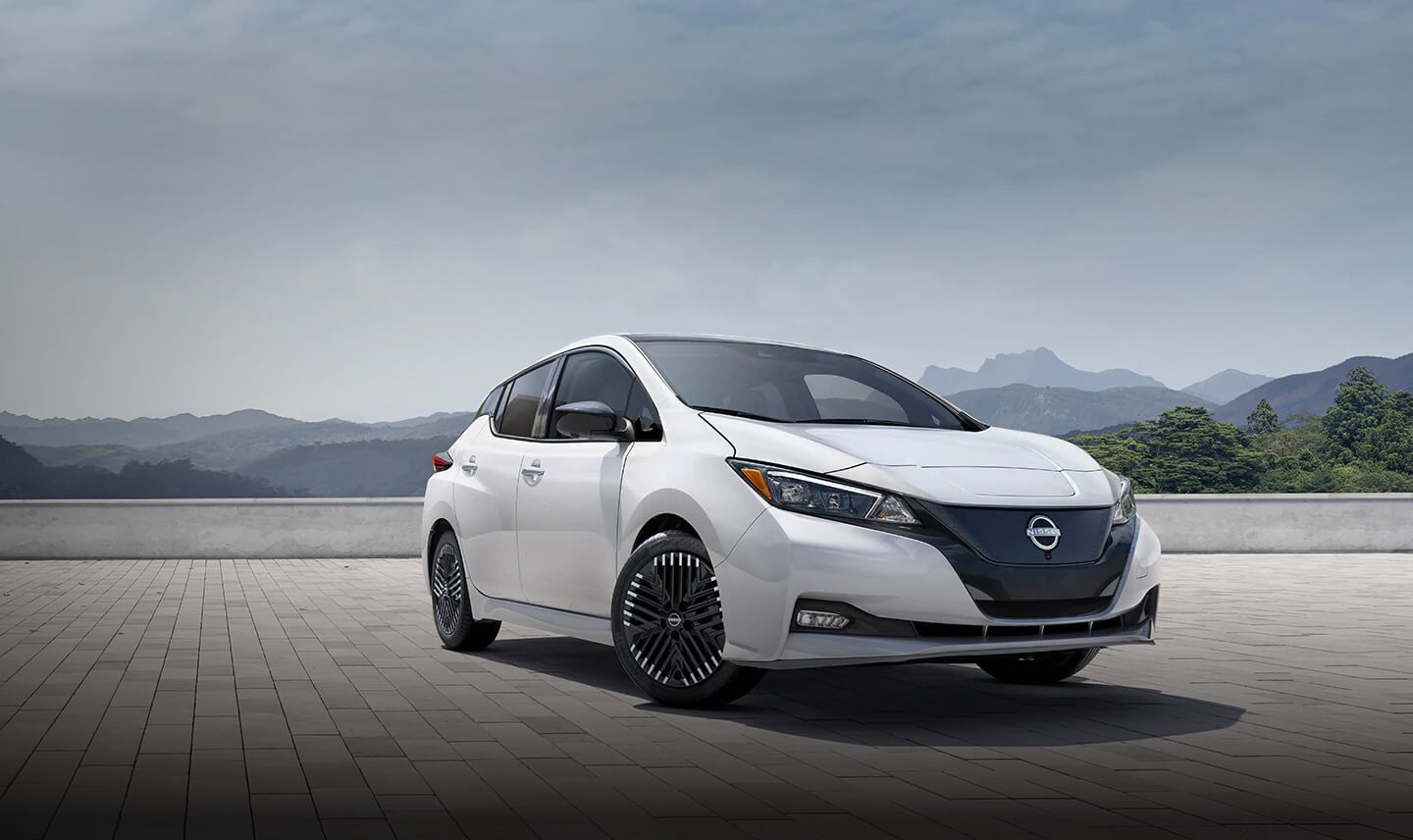
Nissan’s conservative approach to updates and improvements contributes to the Leaf’s rapid obsolescence. While competitors introduce significant technological advances and capability improvements, the Leaf’s evolution has been incremental, leaving it increasingly outdated compared to newer market entrants. The vehicle’s interior technology, charging capabilities, and refinement lag significantly behind current standards.
The mass-market positioning of the Leaf creates additional depreciation pressures through volume and pricing strategies. Unlike premium EVs with limited production and exclusivity benefits, the Leaf competes in the most price-sensitive market segments where depreciation is naturally accelerated.
Nissan’s frequent incentives and discount programs further undermine residual values by creating pricing expectations that don’t support stable used car values. Manufacturing quality and design choices impact the Leaf’s long-term appeal and value retention.
The vehicle’s distinctive but polarizing exterior design limits its appeal to specific buyer demographics, while interior materials and build quality reflect its mass-market positioning rather than premium aspirations. These factors combine to create vehicles that age less gracefully than premium alternatives.
The Leaf’s charging infrastructure limitations create practical concerns that affect resale appeal. The vehicle’s CHAdeMO charging standard, while adequate when introduced, has been largely superseded by CCS charging networks, limiting fast-charging options for owners.
This infrastructure disadvantage becomes increasingly problematic as charging networks evolve, making used Leafs less practical for many buyers. Market analysis indicates the Nissan Leaf experiences depreciation rates exceeding 60% after five years, among the worst performance in the automotive industry.
This dramatic value loss reflects the combination of technological limitations, range constraints, design aging, and mass-market positioning that makes the Leaf particularly vulnerable to depreciation pressures in the rapidly evolving EV marketplace.
3. Chevrolet Bolt EV
The Chevrolet Bolt EV represents a cautionary tale of how manufacturing issues and brand positioning can devastate electric vehicle value retention despite competitive specifications and pricing.
General Motors’ mass-market EV offering has experienced some of the most severe depreciation in the automotive industry due to safety recalls, battery problems, and strategic positioning decisions that prioritized volume over value protection.
The Bolt’s battery recall crisis created unprecedented depreciation acceleration that continues to impact residual values. The massive recall affecting over 140,000 vehicles due to fire risks not only created immediate safety concerns but also established lasting reputation damage that affects used car buyer confidence.
Even after recall completion, the association with battery fires creates psychological barriers that depress resale prices significantly below comparable EVs. General Motors’ pricing strategy has consistently undermined Bolt value retention through aggressive incentives and frequent price reductions.
The company’s focus on achieving EV volume targets led to discount programs that immediately impact existing owner equity while creating market expectations for below-MSRP pricing. This strategy, while successful for market share, proves devastating for residual value performance.

The Bolt’s mass-market positioning and high production volumes create natural depreciation pressures that affect all mainstream vehicles but prove particularly severe for EVs.
Unlike premium EVs with limited production and exclusivity benefits, the Bolt competes in price-sensitive segments where depreciation naturally accelerates. The vehicle’s positioning as an affordable EV rather than a premium product creates pricing expectations that don’t support strong resale values.
Technological limitations relative to newer EVs contribute to the Bolt’s rapid obsolescence and depreciation. While adequate at launch, the Bolt’s charging speed, interior technology, and refinement have been quickly surpassed by competitors offering superior capabilities at similar prices.
The vehicle’s DC fast charging limitations and dated interior design create competitive disadvantages that worsen over time. Build quality and design choices impact the Bolt’s long-term appeal and value stability.
The vehicle’s interior materials, noise levels, and ride quality reflect its budget positioning rather than aspirational characteristics that support value retention. These compromises become more apparent as the vehicle ages and competes against newer alternatives with superior refinement.
General Motors’ electric vehicle strategy changes have created additional uncertainty affecting Bolt values. The company’s decision to discontinue the Bolt in favor of new Ultium-based EVs creates end of life concerns that typically accelerate depreciation.
The lack of long-term product continuity reduces confidence in parts availability and service support, further impacting resale appeal. The Bolt’s brand positioning within Chevrolet’s mainstream lineup provides limited prestige or exclusivity benefits that could support premium pricing in the used market.
Unlike luxury or specialty brands that maintain pricing discipline, Chevrolet’s mass-market focus creates expectations for affordable pricing that directly translate into accelerated depreciation.
Current market data shows the Chevrolet Bolt EV experiencing depreciation rates approaching 65% after five years, among the most severe in the automotive industry.
This dramatic value loss reflects the combination of safety recalls, aggressive pricing strategies, mass-market positioning, and competitive disadvantages that make the Bolt particularly vulnerable to depreciation pressures in the evolving EV marketplace.
4. Jaguar I-PACE
The Jaguar I-PACE presents a particularly disappointing depreciation story, demonstrating how even award-winning electric vehicles can experience rapid value loss when faced with reliability concerns, limited market support, and brand positioning challenges.
Despite winning numerous accolades including World Car of the Year, the I-PACE has become one of the most rapidly depreciating luxury EVs in the market.
Reliability issues have significantly impacted I-PACE value retention from the vehicle’s launch. Software problems, charging system failures, and various electronic malfunctions create ownership experiences that differ dramatically from traditional Jaguar luxury expectations.
These reliability concerns become particularly problematic for used car buyers who face potential repair costs without warranty coverage, creating significant pricing pressure in the secondary market.
Jaguar’s limited commitment to electric vehicle development beyond the I-PACE creates concerns about long-term support and model continuity.
Unlike competitors with comprehensive EV strategies and multiple electric models, Jaguar’s singular focus on the I-PACE without clear successors raises questions about parts availability, service expertise, and technological updates that affect resale confidence.
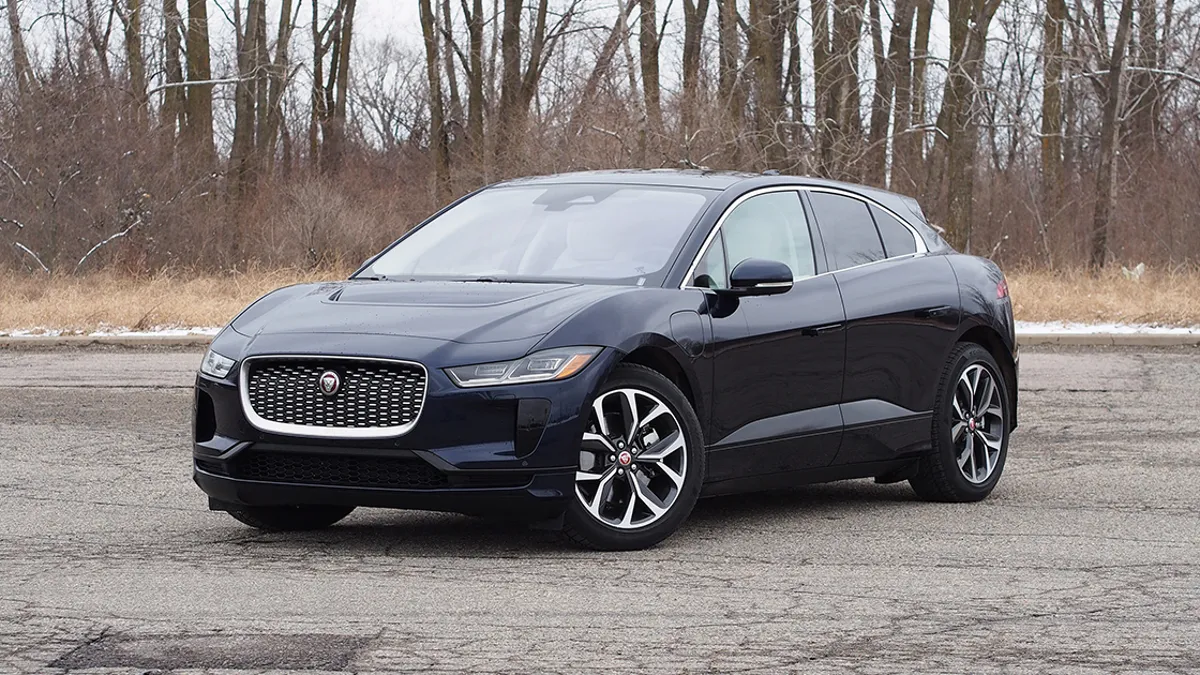
The I-PACE’s technological aging has proven more rapid than expected, with charging speeds and software capabilities falling behind newer competitors.
While revolutionary at launch, the vehicle’s 100kW peak charging speed and infotainment system appear dated compared to current luxury EVs offering 200kW+ charging and advanced user interfaces. This technological gap widens over time, accelerating depreciation.
Jaguar’s traditional dealer network has struggled with EV service capabilities, creating ownership experience issues that impact brand perception and resale values.
Unlike manufacturers with dedicated EV training and equipment, many Jaguar dealers lack the expertise and tools necessary for optimal I-PACE service, leading to customer dissatisfaction that affects used car buyer confidence.
The luxury EV market’s rapid evolution has left the I-PACE competitively disadvantaged against newer entrants from established German manufacturers.
Models like the BMW iX, Mercedes EQC, and Audi e-tron offer superior luxury credentials, reliability reputations, and technological sophistication that highlight the I-PACE’s limitations and create pricing pressure in the used market.
Jaguar’s brand positioning challenges in the electric space contribute to depreciation pressures. While the brand maintains luxury credentials in traditional vehicle categories, its electric vehicle expertise appears limited compared to specialized EV manufacturers or established luxury brands with comprehensive electrification strategies.
This perception gap affects buyer confidence and pricing power. Production quality inconsistencies have created additional depreciation factors for the I-PACE.
Panel gaps, interior component durability, and electronic system reliability vary significantly between individual vehicles, creating uncertainty for used car buyers about specific vehicle condition and potential issues. This quality variability typically accelerates depreciation compared to brands with consistent manufacturing standards.
Market analysis reveals the Jaguar I-PACE experiencing depreciation rates of approximately 55-65% after four years, significantly worse than traditional luxury vehicles and many mainstream EVs.
This dramatic value loss reflects the combination of reliability concerns, limited brand support, technological aging, and competitive pressures that make the I-PACE one of the most rapidly depreciating luxury EVs despite its initial critical acclaim and innovative design.
5. Audi e-tron
The Audi e-tron, despite representing the German luxury manufacturer’s flagship entry into the electric vehicle market, has experienced disappointing depreciation performance that illustrates how even established luxury brands can struggle with EV value retention.
The e-tron’s rapid depreciation demonstrates the challenges facing traditional manufacturers transitioning to electric powertrains while competing against specialized EV competitors.
The e-tron’s conservative approach to electric vehicle technology has contributed significantly to its rapid obsolescence and depreciation. While Audi prioritized refinement and luxury over cutting-edge EV capabilities, the resulting vehicle offers limited range, slow charging speeds, and efficiency figures that appear dated compared to newer competitors.
This technological conservatism, intended to ensure reliability, instead created competitive disadvantages that worsen over time. Audi’s pricing strategy for the e-tron has consistently undermined value retention through aggressive incentives and lease programs designed to achieve volume targets.
The manufacturer’s focus on gaining EV market share led to discount programs that immediately impact existing owner equity while creating market expectations for below-MSRP pricing. These incentives, while successful for sales, prove devastating for residual value performance.
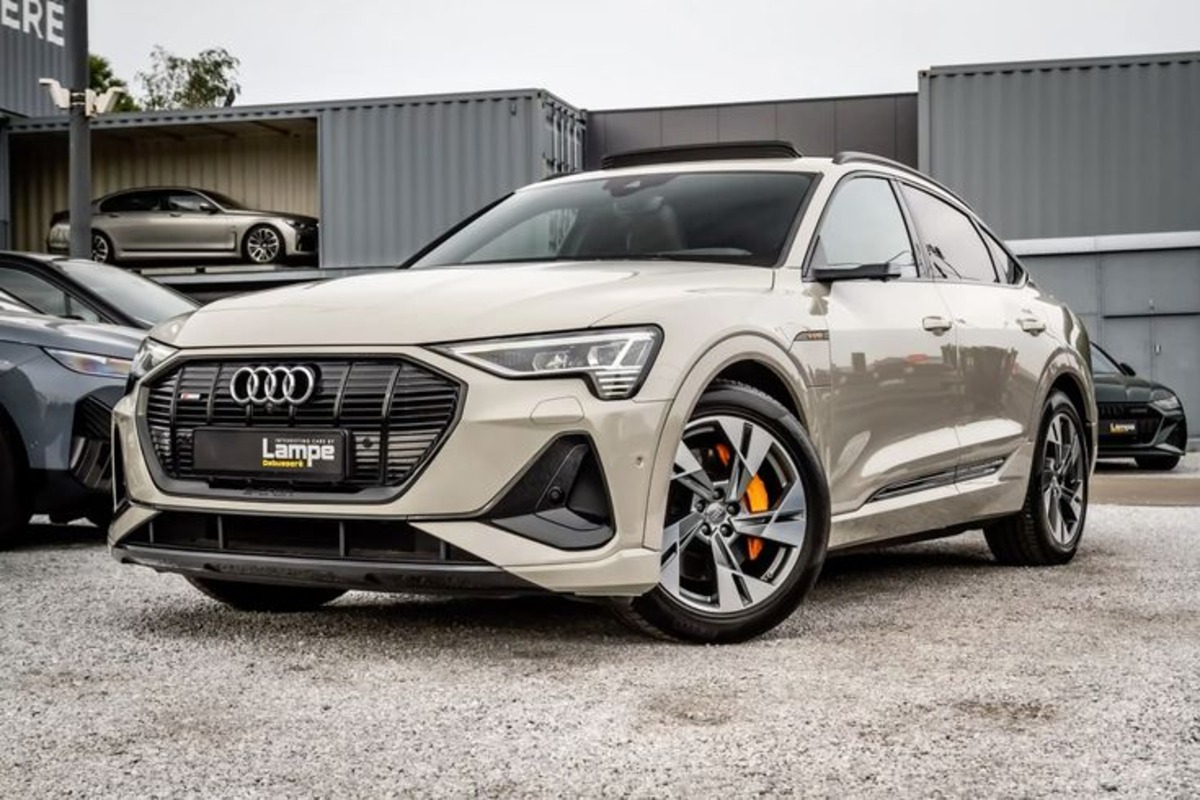
The luxury EV market’s rapid evolution has left the e-tron competitively disadvantaged against both specialized EV manufacturers and other traditional luxury brands.
Tesla’s Model X offers superior technology and charging infrastructure, while newer luxury EVs from BMW and Mercedes provide better specifications and more advanced features. This competitive pressure forces e-tron prices lower in the used market.
Manufacturing costs and complexity contribute to the e-tron’s depreciation through reliability concerns and service expenses. The vehicle’s adaptation of Audi’s MLB Evo platform for electric use creates compromises in packaging efficiency and weight that affect performance and range.
Additionally, the complex integration of traditional luxury systems with electric powertrains creates potential maintenance issues that concern used car buyers.
Audi’s dealer network, while extensive, has faced challenges adapting to EV service requirements and customer education needs. Unlike manufacturers with dedicated EV strategies, many Audi dealers lack specialized EV expertise, creating service experiences that don’t meet luxury customer expectations. These service quality issues impact brand perception and resale confidence.
The e-tron’s design language, while attractive, has aged more rapidly than expected in the fast-evolving EV marketplace. The vehicle’s traditional SUV proportions and conservative styling appear dated compared to purpose-designed EVs with more modern aesthetics. This design aging contributes to depreciation as the vehicle appears less contemporary over time.
Range limitations represent a crucial factor in the e-tron’s depreciation performance. With EPA ratings significantly below advertised figures and real-world range falling short of competitor capabilities, the e-tron cannot satisfy many EV buyers’ requirements. These range constraints become more pronounced as battery capacity naturally degrades over time.
Market data indicates the Audi e-tron experiences depreciation rates of approximately 50-55% after four years, significantly worse than traditional Audi luxury vehicles and many competing EVs.
This disappointing value retention reflects the combination of conservative technology, aggressive pricing strategies, competitive pressures, and the challenges facing traditional luxury manufacturers in the electric vehicle transition.
Also Read: 5 Bargain Sports Cars That Stay Reliable vs 5 Headline-Grabbing Models That Fail

